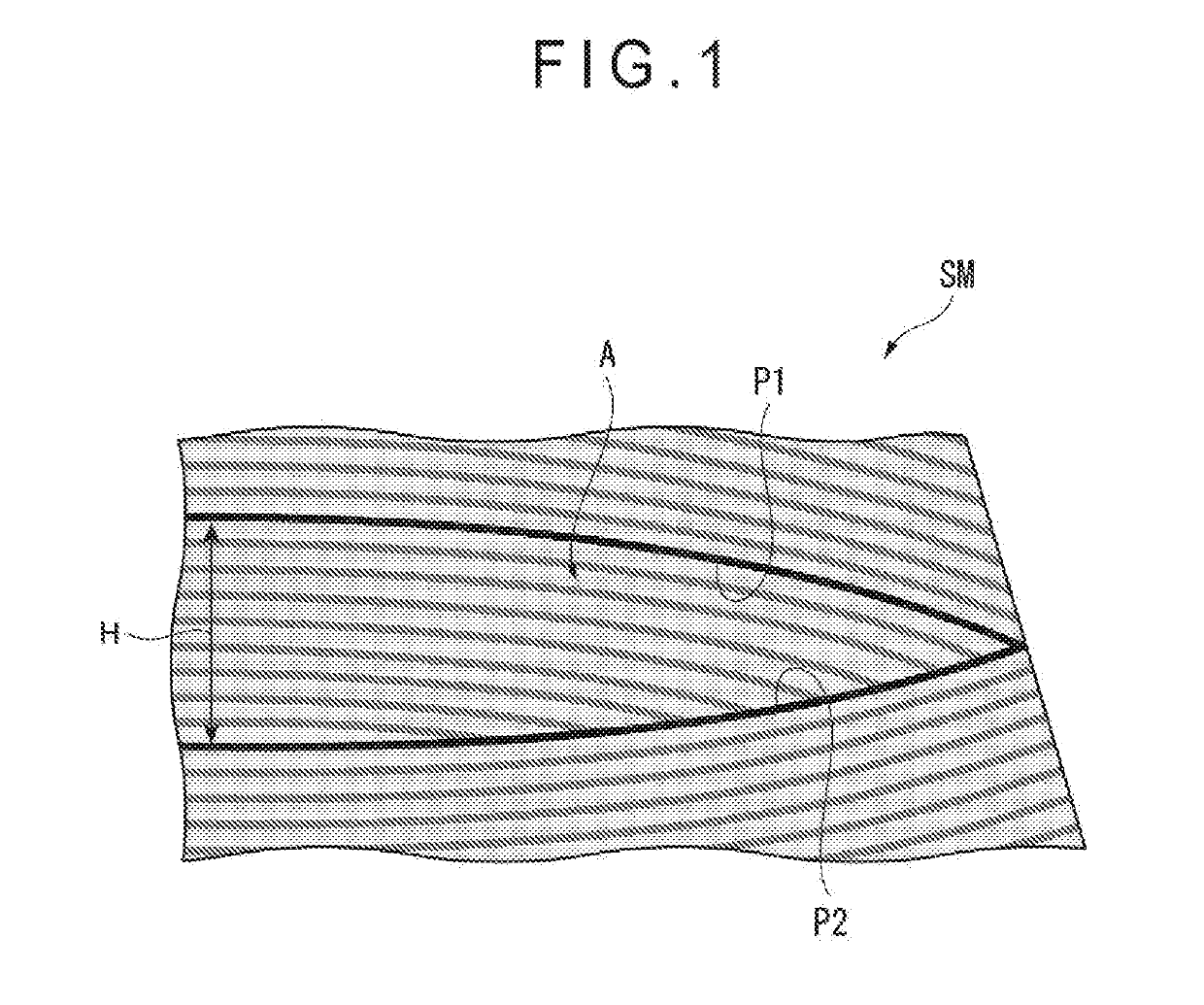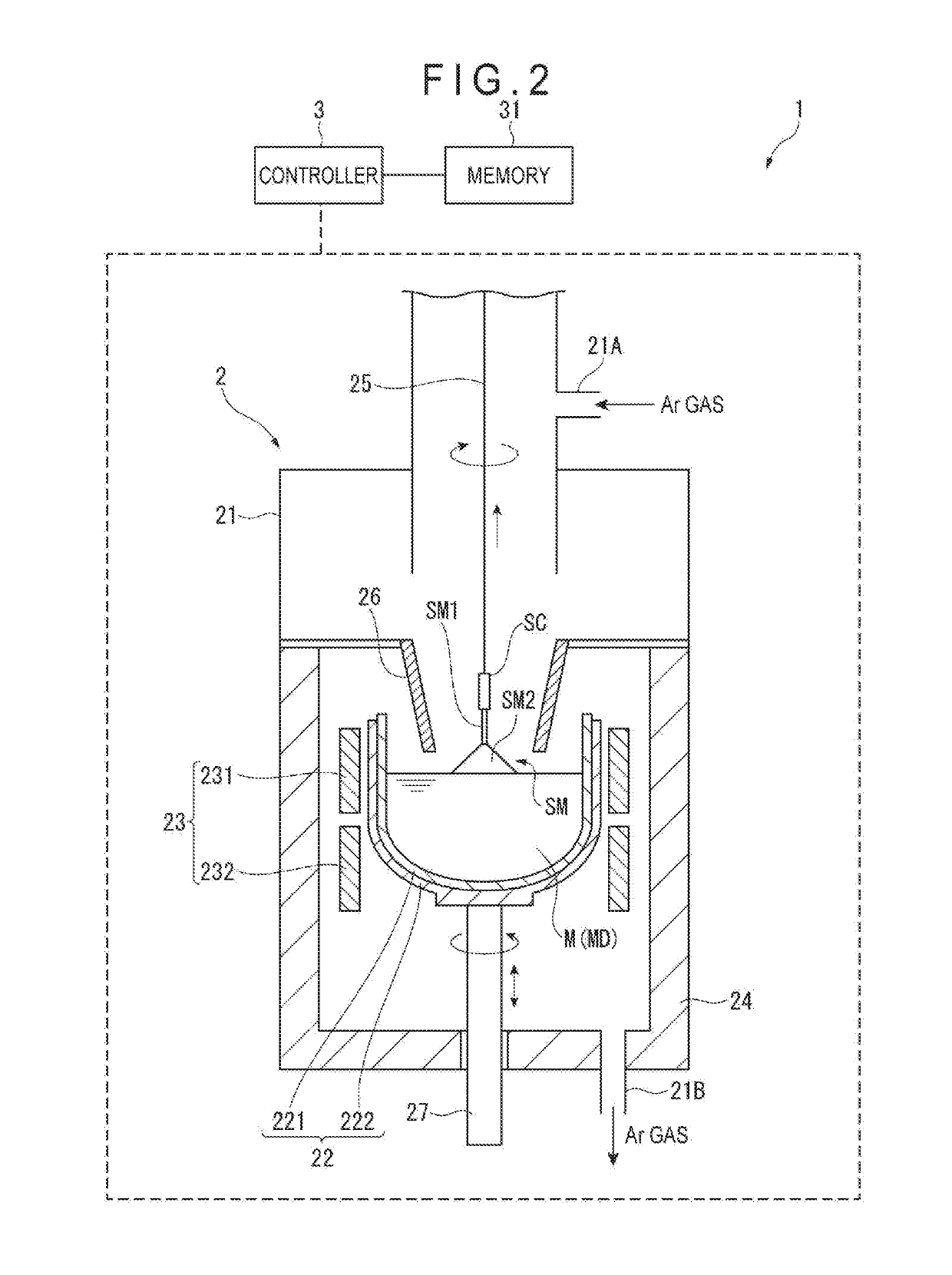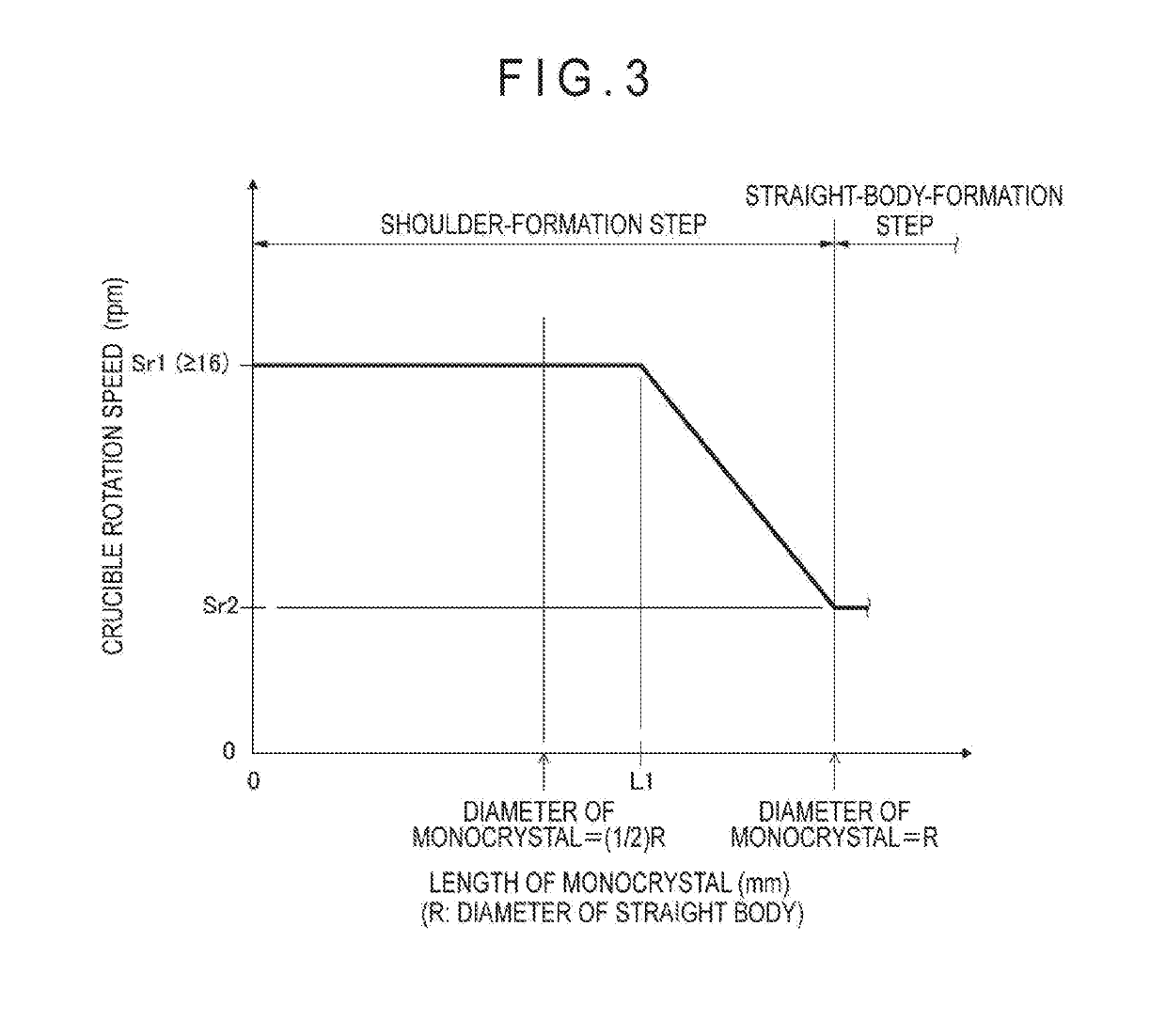Silicon monocrystal production method
a monocrystal and production method technology, applied in single crystal growth, single crystal growth details, chemistry apparatus and processes, etc., can solve problems such as inability to always prevent, and achieve the effects of stable quality, less dislocation, and reduced occurrence of dislocation
- Summary
- Abstract
- Description
- Claims
- Application Information
AI Technical Summary
Benefits of technology
Problems solved by technology
Method used
Image
Examples
examples 1 and 2
[0079]Monocrystalline silicons were produced in Examples 1 and 2 under the same conditions as in Comparative Example 1 except that the crucible was rotated respectively at 16 rpm and 20 rpm during the period when the crucible was rotated at 14 rpm in Comparative Example 1. Table 1 shows the try frequency, dislocation frequency, and dislocation rate.
experiment 2
between Dislocation and Height of Remelt Growth Area
[0085]The monocrystalline silicon of Comparative Example 1, in which dislocation occurred, was vertically cut at a center in a radial direction and the obtained cross section of the shoulder was observed on X-rays to evaluate the number and the height of the remelt growth area(s). The same evaluation was also performed on the monocrystalline silicons of Examples 1, 2 and 5, in which no dislocation occurred. The results are shown in FIG. 6.
[0086]As shown in FIG. 6, the shoulder of each of Examples 1, 2 and 5 had remelt growth areas of less than 200 μm in height but no remelt growth area of 200 μm or more. In contrast, the shoulder of Comparative Example 1 had not only remelt growth areas of less than 200 μm but also ones of 200 μm or more. Further, since no dislocation occurred in the monocrystalline silicons of Examples 3, 4 and 6, the shoulders of Examples 3, 4 and 6 are supposed to have no remelt growth area of 200 μm or more in ...
experiment 3
between Rotation Speed of Crucible and Temperature Variation of Melt Surface
[0088]A dopant-added melt was prepared under the same conditions as in producing a typical monocrystalline silicon. Further, an Ar gas was supplied to a chamber and the pressure was set at 450 Torr (59995 Pa) in the same manner as in producing a typical monocrystalline silicon. The crucible was rotated at 10 rpm and a temperature of a center of a surface of the dopant-added melt was measured with an infrared radiation thermometer. The measurement was performed every second and an average of variations was evaluated per 10 seconds. The results are shown in FIG. 7A.
[0089]Similarly, the temperature of the center of the surface of the dopant-added melt was measured and evaluated for each of rotation speeds of 12 rpm, 14 rpm, 16 rpm, 18 rpm, and 20 rpm. The results are shown in FIGS. 7B, 7C, 8A, 8B, and 8C. The standard deviations of the measurement results are shown in Table 4.
TABLE 4Rotation Speed ofStandardCru...
PUM
| Property | Measurement | Unit |
|---|---|---|
| height | aaaaa | aaaaa |
| diameter | aaaaa | aaaaa |
| diameter | aaaaa | aaaaa |
Abstract
Description
Claims
Application Information
 Login to View More
Login to View More - R&D
- Intellectual Property
- Life Sciences
- Materials
- Tech Scout
- Unparalleled Data Quality
- Higher Quality Content
- 60% Fewer Hallucinations
Browse by: Latest US Patents, China's latest patents, Technical Efficacy Thesaurus, Application Domain, Technology Topic, Popular Technical Reports.
© 2025 PatSnap. All rights reserved.Legal|Privacy policy|Modern Slavery Act Transparency Statement|Sitemap|About US| Contact US: help@patsnap.com



